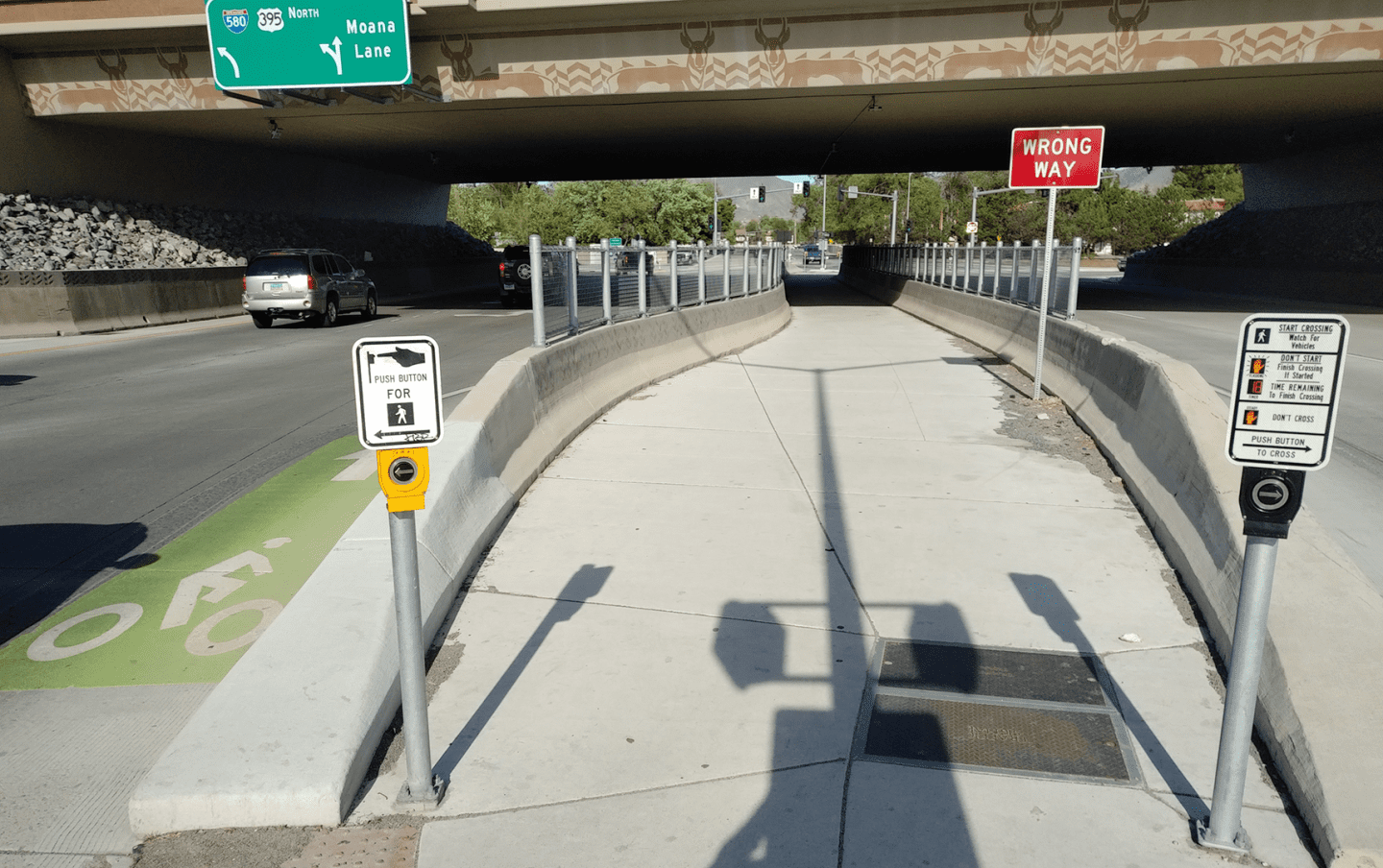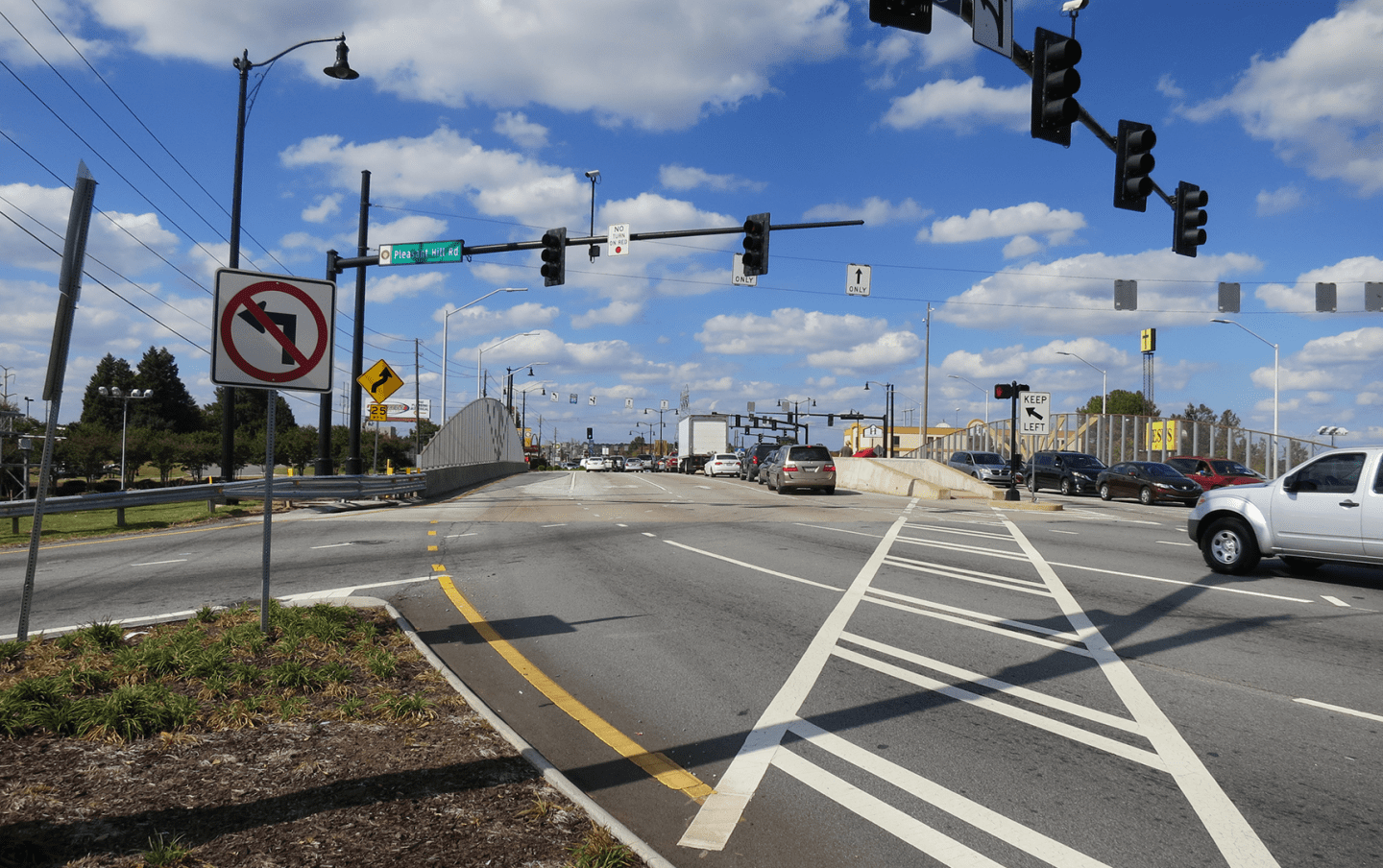March 11, 2022
Historically, people walking and biking have not been prioritized in intersection design, and this is often apparent at Alternative Intersections and Interchanges (AIIs).
An NCHRP report released in 2021 is addressing this issue. NCHRP Research Report 948, Guide for Pedestrian and Bicyclist Safety at Alternative and Other Intersections and Interchanges, is a guide for transportation practitioners to improve non-motorized user safety at every intersection through planning, design, and operational treatments. A win for all modes of transportation, the new guidebook serves users and transportation experts alike by giving engineers and planners the tools to create safer roadways for bicyclists and pedestrians at all intersections.

The unfamiliar traffic flows and patterns of AIIs can make it difficult to provide information about the direction of car traffic or the location of pedestrian crossings and bicycle facilities.

NCHRP Research Report 948 highlights design characteristics that impact the safety and quality of service for people walking and biking.
What Are AIIs?
Alternative Intersections and Interchanges (AIIs) is a category that encompasses less common intersections designed to improve efficiency and safety for drivers. Examples include Restricted Crossing U-Turns, Diverging Diamond Interchanges (DDI), Median U-Turns (MUT), Displaced Left Turns, Quadrant Roadway (QR), and Continuous Green-T. Some of these designs work by reversing traffic lanes from traditional directions which can help to relieve congestion; however, the unfamiliar traffic flows and patterns can make it difficult to provide information to pedestrians, bicyclists, and drivers about the direction of car traffic or the location of pedestrian crossings and bicycle facilities. This is an even bigger concern for visually impaired pedestrians.
The Task at Hand
With funding from the National Cooperative Highway Research Program (NCHRP), Kittelson partnered with the Institute for Transportation Research and Education to take the findings from a literature review, survey of agencies who have implemented AIIs, and focus group sessions-more than 8,000 comments in total from transportation professionals and roadway users-to address a broad range of challenges, including:
- Describing new and emerging AII designs
- Documenting best practices for integrating multimodal movements into AII designs
- Documenting key considerations for each AII type, including wayfinding, accommodation for pedestrians with disabilities, delay for pedestrians and bicyclists, and safety for pedestrians and bicyclists
- Documenting benefits to pedestrians and bicyclists in AII design and treatments
- Developing a method for evaluating, selecting, and incorporating pedestrian and bicyclist safety considerations into the design process
- Designing an approach to assess impacts of AIIs on pedestrian and bicyclist behavior
- Providing a foundation for future data collection to produce Crash Modification Factors (CMFs)
It was our aim to develop an analysis method that would be flexible enough to apply to any intersection, so that the value of the guide wouldn’t be limited to the types of intersections we’re familiar with today.
The “20 Flag” Method
The quantitative analysis method presented in NCHRP Research Report 948 is built around 20 design flags. These flags highlight design characteristics that impact safety and quality of service for people walking and biking regardless of the intersection type. Examples include tight walking environments, nonintuitive motor vehicles movements, grade changes, and motorists crossing bicycle paths.
Each of the 20 flags includes thresholds for a yellow flag and for a red flag at a given intersection. A yellow flag is generally associated with user comfort and a red flag with safety. The list is meant to be used both as a comparison tool when selecting between various intersection alternatives as well as guide for practitioners in the design process, highlighting areas of concern.
The flags can also be used to indicate where safety countermeasures would be appropriate. To assist practitioners with these design and countermeasure decisions, four chapters of the guidebook are dedicated to providing solutions to specific intersection types.
It is worth noting that while these 20 flags can be present at alternative intersections, they are not unique to alternative intersections. The methodology applies to all intersections, not just AIIs. This means that even agencies who do not currently have AIIs in their transportation systems will still benefit from the analysis in the guidebook.
Download NCHRP Research Report 948
The Guide for Pedestrian and Bicyclist Safety at Alternative and Other Intersections and Interchanges is available on the Transportation Research Board’s website. We’re grateful to all contributors and excited to be able to share this resource! For more information about the guide, feel free to reach out to Shannon Warchol, Bastian Schroeder, or Mike Alston.
